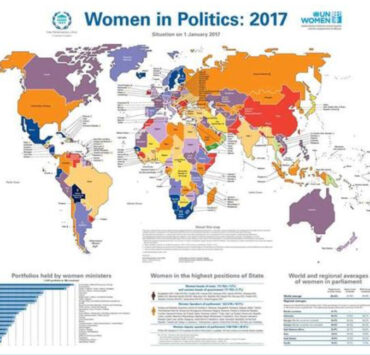
By Swarna Rajagopalan
As Goa goes to the polls today and everyone talks about pink booths and teddy-bears, something Ammu Joseph has already discussed on this blog
(https://nwmigenderwatch.wordpress.com/2017/02/01/what-are- women-voters- made-of/), the Election Commission at the Centre shows that the apple (the Goa EC) hasn’t fallen far away from the tree. Its observer team for Goa is an all-woman team—because men are likely to be distracted by Goa’s temptations. Yes, that is what is reported. Manipur is getting an all-male team because it may be too dangerous for women; never mind that women form the face and the backbone of the resistance to violence in Manipur.
Smriti Kak Ramachandran, Goa polls: EC decides to depute all-women election observers’ team is state, Hindustan Times, January 25, 2017.
http://www.hindustantimes.com/india-news/goa- polls-ec- feels-to- depute-all- women-election-observers-team/story- X4D534jCummAQ7PyIgAznL.html
Why do I start with reports about the Election Commission’s arrangements in a blog that monitors media? I do so because these big red flags have raised no serious comment on why our institutions can get away with essentialist gender ideas. Gender discrimination is not news-worthy.
***
In Goa, as in Punjab, the one gender issue that does get a little media attention is that of women candidates. There are very few of them, we read. Well, that is not news, and the fact that no one writes “too few” is also not surprising.
There are just 19 women candidates in the fray, out of a total of 251, according to a report by Uddipta Das for india.com (http://www.india.com/news/india/goa-assembly- election-2017- key-facts-at- a-glance- 1799333/).
In a poorly edited report-let (http://www.thehindu.com/elections/goa-2017/Fewer- women-candidates-in- Goa/article17099183.ece) on fewer candidates in Goa, the Hindu quotes a Congress leader: “This has nothing to do with indifference to women by the party, because our party has women working at different levels of the organisation . It is just that the party has to choose candidates who can win polls,” said Kunda Chodankar, former president of the Morcha.” Which Morcha? Never mind. It must be something to do with ladies.
That there are few women candidates is attributed to women’s unwillingness to contest, according to two reports. Shobha Oza of the All-India Mahila Congress is forthright, in a December 2016 report
(http://timesofindia.indiatimes.com/city/goa/Women-Cong- leaders-eye- five-seats- in-2017-polls/articleshow/55917407.cms). “We will see who is ready to contest and who can win the election. We will talk to our women leaders, but their winnability is also a factor [emphasis mine]. It has been discussed with the state leadership and we will definitely try to include more women candidates.” (This is a view elsewhere endorsed by BJP Chief Minister Laxmikant Parsekar
(http://timesofindia.indiatimes.com/city/goa/over-50- voters-women- but-candidates- just-7/articleshow/56787247.cms) who in that report gets called out for his misogyny by a feminist activist.) Does the newspaper follow up by discussing why women are not ‘winnable’? Of course not. That is a given.
Lisa Monteiro’s election report tries to find out why women are not being nominated and manages to mention several reasons—winnability, money and muscle power and misogyny. But also this, Iknow, in Goa, people want their MLAs at their beck and call—if they want their electricity to be fixed, they want a tap to be replaced or if someone is sick in their family to accompany them to the hospital in the night or sit with the sick person… they expect the MLA to be present for everything, which is difficult for women to do
Lisa Monteiro, Over 50% voters women, but candidates? Just 7%, Times of India, January 26, 2017.
http://timesofindia.indiatimes.com/city/goa/over-50- voters-women- but-candidates- just-7/articleshow/56787247.cms
An Indian Express report title gets straight to the heart of the matter: “Women struggle to find political space in Goa.” Socio-economic indicators set the context and there is an allusion to Goa’s woman chief minister. Within its limitations, it manages to ask why women are so poorly represented:
“The role of women in political decision-making is totally absent in Goa. The progressiveness of the state is a media image that has been projected. The exploitative side of Goan society has been kept hidden under wraps,” said Sabina Martins, convener, Goa Bachao Abhiyan.
Martins felt women in the state are not vocal and assertive of their rights. It is this very reason, in fact, that some politicians cite while justifying the denial of tickets to women.
“We are willing to give tickets. It is just that there are not many women who are ready tocome forward,” claimed Maharashtra Gomantak Party patron Ramkrishna Sudhin Dhavalikar. His party, a key player in Goa, has not nominated any woman candidate.
Zeeshan Shaikh, Three parties, 9 tickets: Women struggle to find political space in Goa, Indian Express, January 23, 2017.
http://indianexpress.com/elections/goa-assembly- elections-2017/three- parties-9- tickets-women-struggle-to- find-political- space-in- goa-4487025/
By contrast, here is a fairly detailed article (http://www.heraldgoa.in/Review/Meet-the- girls-who-are-AAPing- the-ante/110732.html) on the Aam Aadmi Party’s women candidates that is strong on research and falls apart because of how it is written. To be fair, the reporter has taken the trouble to talk to women candidates about their main concerns. A little guidance could have transformed this report.
The title itself is problematic, “Meet the girls who are AAPing the ante.” Girls? These are grown women, eligible to contest elections in a real-world democracy, not a summer holiday game. And who are these grown women? “From the first runner up of the Dance India Dance Super Mom 2013 to a retired central government officer and an ex-international hockey player, an architect, a former village sarpanch, and a food consultant-cum- food stylist.” Hardly girls!
It congratulates the party for nominating five candidates, stating that “2017 elections have broken the stereotype.” How easily we are satisfied!
Vibha Verma, Meet the girls who are AAPing the ante, Herald, January 22, 2017.
http://www.heraldgoa.in/Review/Meet-the- girls-who- are-AAPing- the-ante/110732.html
***
What about other expressions of gender inequality and discrimination?
We learn from one report (http://timesofindia.indiatimes.com/city/goa/Women-Cong- leaders-eye-five-seats- in-2017- polls/articleshow/55917407.cms) that “Oza [Shobha Oza] slammed the BJP and MGP MLAs for their “sexist remarks” on women. “The corruption of the local government and the sexist remarks of the MLAs reveal their mindset about women…” The only other mention of misogynistic speech I came across was in this report
(http://timesofindia.indiatimes.com/city/goa/over-50- voters-women- but-candidates- just-7/articleshow/56787247.cms) where the Chief Minister gets called out for his misogyny by a feminist activist.
Starting ominously, the Goa Herald report (http://www.heraldgoa.in/Review/Meet-the- girls-who-are-AAPing- the-ante/110732.html) actually discusses with women candidates the issues they identify as most important. The lack of sanitation necessitation open defecation by women is common to most of them. Water shortages, electricity and fish storage are others. This is a very pleasant surprise in an article that uses ‘girls’ in the title.
Goa has been in the news for sexual violence against visitors as well as moral policing. These, if we were to go by news reports and commentary alone—as most of us have to—are non-issues as well.
***
What the Goa reportage teaches us about gender-sensitive reporting is this—when your understanding of any subject is reduced to one issue, and then mostly that’s just checked off a list, it is a parody, not reportage. Also, editors clearly matter; the issues they flag as important, the brief given to sub-editors (who write those awful titles) and also their supervision of the actual reporting must make a difference (written as a non-journalist).




